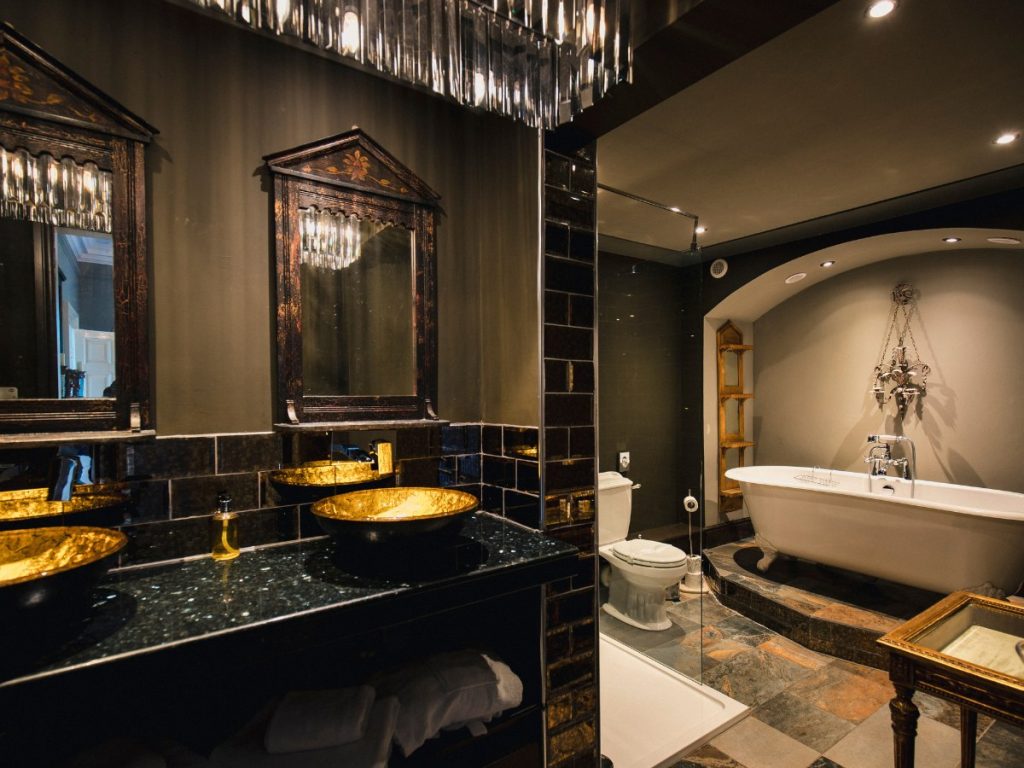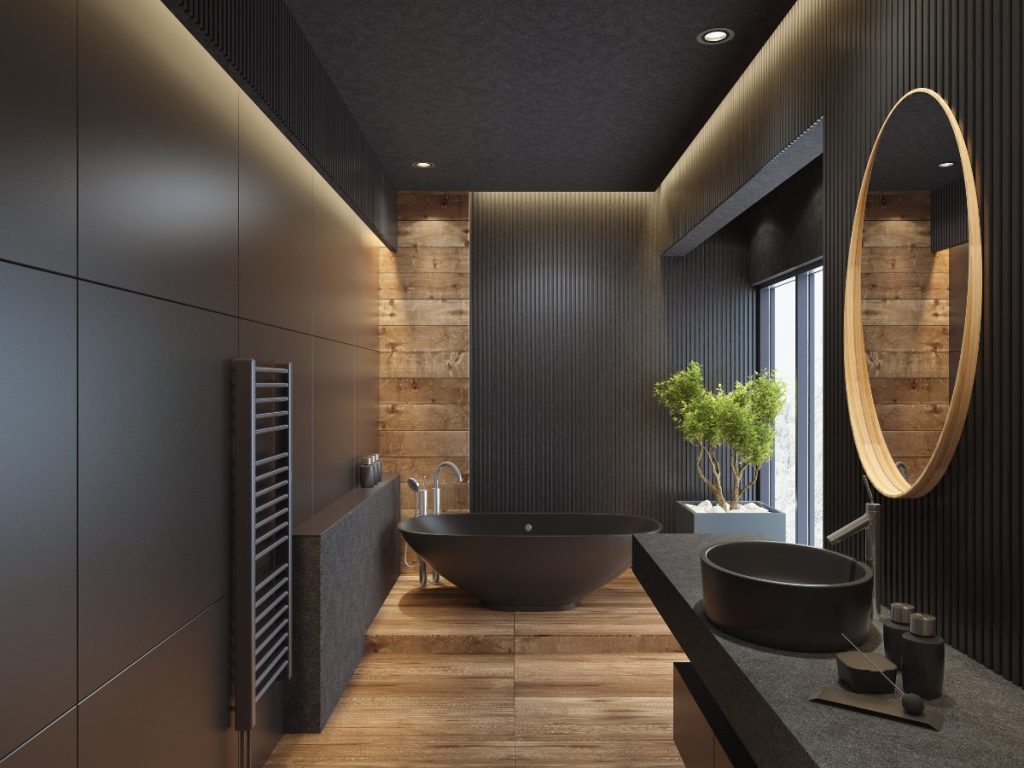A bathroom remodel can give your home a new look and boost its value. But before you begin, it’s essential to consider all the factors involved. From setting a budget to choosing the perfect design to ensuring everything is installed correctly – there’s a lot to remember.
In this blog post, we will guide you through remodeling your bathroom from start to finish. We’ll cover everything from planning and budgeting to selecting suitable materials and avoiding common mistakes that could cost you time and money.
Whether you’re updating an existing bathroom or building a new one from scratch, our expert tips and advice will help you create the perfect space for your needs. So, let’s get started!
Setting the Budget for Your Bathroom Remodel
Consider all potential costs, including fixtures, labor, and unexpected expenses—research average costs for various bathroom remodeling elements to plan your budget better and prioritize your needs.
Remember to account for a contingency fund to cover unforeseen expenses and use a detailed spreadsheet to track expenses. You can ensure a successful bathroom renovation without financial stress by allocating the budget wisely.
Choosing a Bathroom Design that Suits You
When considering a bathroom design, aligning it with your personal style and practical needs is essential. Factors like space, natural light, and ventilation should guide your choice.
Modern designs often feature sleek fixtures and minimalist aesthetics, while classic designs embrace timeless elements and elegant fixtures. Consulting with a professional designer can help you visualize and select the perfect design for your dream bathroom.
Modern Bathroom Designs
When remodeling a bathroom, consider modern designs with clean lines, minimalism, and contemporary fixtures. Incorporate natural stone, porcelain tile, and high-quality cabinetry for a modern feel. Popular options include vessel sinks, solid surface countertops, and sleek vanity fixtures.
Enhance the ambiance with modern bathroom accessories, lighting, and purpose lighting. Illumination options like ceiling fixtures and sconces can add to the modern appeal. Embrace the sleek and sophisticated look that modern bathroom designs offer.
Classic Bathroom Designs
Consider timeless fixtures, traditional cabinetry, and elegant decor when considering classic bathroom designs. Quality cabinetry, porcelain fixtures, and classic accessories can complement a traditional look.
Explore various countertop options, fixtures, and accessories to complement a classic bathroom, and consider incorporating vintage-style accessories, decorative towel bars, and traditional medicine cabinets for an elegant and sophisticated ambiance. Embracing these elements will evoke a sense of timelessness and create a classic and luxurious space.
The Process of Demolition and the Preparation
Planning a smooth demolition involves securing permits and prioritizing safety measures like protecting flooring and ventilation. Aftercare considerations include cleanup and mold prevention, highlighting the importance of careful planning before demolition.
Mold and moisture assessment is crucial before beginning this first step in bathroom remodeling. This ensures a seamless transition into the renovation phase, setting the stage for a successful bathroom renovation project.
Necessary Steps for a Smooth Demolition
To ensure a smooth demolition, securing the required permits and assessing the structural impact beforehand is essential. Proper planning for ventilation, dust control, and mold prevention during and after demolition is crucial.
Consider the impact on plumbing, electrical, and ventilation systems and plan accordingly. Above all, prioritize the safety of homeowners, contractors, and the property during demolition. Before initiating demolition, evaluate the layout, decor, and plumbing systems to facilitate a successful renovation.
Safety Measures During Demolition
During the demolition process, it’s crucial to prioritize safety measures to ensure the well-being of everyone involved. This includes implementing proper ventilation, using protective gear, and setting safety barriers to minimize potential risks. It’s essential to minimize the exposure of plumbing, electrical, and ventilation systems during the demolition to avoid damage or hazards.
Promptly addressing leaks, moisture, or humidity issues is vital to prevent further complications following demolition. Additionally, considering the durability of fixtures, flooring, and cabinetry during the process helps prevent unnecessary damage. Lastly, implementing necessary safety precautions post-demolition is essential to prevent leaks and other potential issues.


Essential Tips for Bathroom Plumbing
When remodeling a bathroom, it’s crucial to prioritize the plumbing layout for a successful renovation. Proper ventilation is essential in preventing mold and mildew while also controlling moisture in the bathroom. Considering the bathroom’s square footage is essential when designing the ventilation system. Additionally, investing in quality plumbing fixtures is paramount to ensure durability in the long run. By incorporating these tips, you can effectively address the plumbing aspects of your bathroom renovation project.
Safe Electrical Installations in Bathrooms
When remodeling a bathroom, it’s crucial to prioritize safe electrical installations. GFCIs are essential for wet area electrical safety, preventing the risk of electrical shock. It’s essential to use bathroom light fixtures rated for wet locations to ensure safety.
Proper bathroom ventilation is necessary for electrical safety and moisture control. Outlets near water sources must have ground-fault protection to prevent hazards. Prioritizing bathroom ventilation helps maintain a safe and healthy environment, mitigating potential electrical risks.
Drywall, Paint, and Tile Selection
Proper selection of drywall is critical for controlling bathroom moisture. Quality paint is essential for moisture-prone bathroom walls, while sealed tile grout lines prevent moisture damage. Consider moisture-resistant drywall and choose tiles suitable for wet area installation to ensure the durability and longevity of the bathroom renovation.
Choosing the Right Drywall for Your Bathroom
When remodeling a bathroom, choosing the right drywall is crucial. Opt for moisture-resistant drywall to prevent issues due to moisture. Consider using greenboard drywall in your bathroom for effective moisture control. Standard drywall should be avoided in moisture-prone bathrooms. Additionally, mold-resistant drywall is suitable for bathroom remodeling projects. Ensure proper installation of the chosen drywall to prevent any moisture-related problems.
Selecting the Perfect Paint and Tiles
When remodeling a bathroom, selecting high-quality paint that can withstand moisture and humidity is crucial. Opt for mold-resistant paint to prevent moisture-related issues. Also, choose bathroom tiles suitable for wet area installation and seal grout lines to prevent moisture-related tile damage. Look for tiles with low water absorption rates to ensure durability and longevity in your bathroom. These considerations will contribute to creating a functional and visually appealing bathroom space.
Installing Showers, Tubs, and Ventilation Systems
When remodeling a bathroom, it is essential to consider different shower types for varying bathroom sizes. Adequate bathroom ventilation plays a crucial role in preventing the growth of mold and mildew. Proper tub installation is also essential for effective bathroom moisture control.
Choosing suitable shower heads for your bathroom layout is essential for creating a functional and comfortable space. By addressing these considerations, you can ensure that your bathroom’s showers, tubs, and ventilation systems contribute to a successful and long-lasting renovation.
Types of Showers and Tubs for Different Bathroom Sizes
When remodeling a bathroom, consider the ideal shower and tub options for different bathroom sizes. Corner showers are a perfect fit for small layouts, while shower pans simplify maintenance. Tub-shower combos suit limited spaces, while walk-in showers complement modern designs. Spacious bathrooms can benefit from the elegance of freestanding tubs. Each option contributes to the overall aesthetic and functionality of the bathroom, ensuring a tailored experience based on the available square footage.
The Importance and Installation of Ventilation Systems
Proper bathroom ventilation controls moisture, prevents mold, and maintains a healthy environment. Select ventilation fans based on your bathroom’s size to ensure adequate airflow and humidity control. Installing the proper ventilation system can safeguard bathroom fixtures from moisture damage and avoid humidity-related issues. Adequate ventilation contributes to a comfortable and long-lasting bathroom, supporting your overall renovation goals.
Choosing the Right Vanity and Sink for Your Bathroom
When remodeling a bathroom, the choice of vanity and sink is crucial. Vessel sinks add modern elegance, while pedestal sinks are ideal for small bathrooms. Wall-mounted vanities maximize space, and under-mount sinks create a seamless surface. Consider vanity accessories for efficient organization.
Installation and Types of Toilets
When remodeling a bathroom, the installation and types of toilets play a crucial role in the overall design and functionality. Different types of toilets offer unique features, including dual-flush options and elongated bowls, catering to varying preferences.
It’s essential to consider the bathroom layout, plumbing, and ventilation when choosing a toilet to ensure seamless installation and efficient functionality. Popular options like wall-mounted toilets and comfort height toilets provide space-saving designs and cater to different needs, enhancing the bathroom experience. Additionally, durability, maintenance ease, and water efficiency are crucial for a successful toilet installation.
Innovative Storage Solutions for Your Bathroom
Consider innovative storage solutions to maximize space and functionality when remodeling your bathroom. Utilize over-the-toilet cabinets or shelving for vertical storage, and incorporate recessed niches in the shower area for bath essentials. Install towel bars, hooks, and baskets for organized access to towels and linens. Opt for vanity cabinets with built-in organizers or pull-out shelves to keep the space efficient. Additionally, floating shelves and wall-mounted cabinets offer functional storage without occupying floor space. These innovative storage solutions enhance the practicality and aesthetic of your bathroom renovation.

